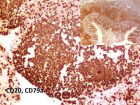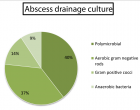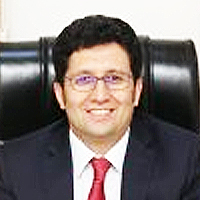Table of Contents
Identification and resolution of drug therapy problems among hypertensive patients receiving care in a Nigerian Hospital - A pilot study
Published on: 1st October, 2020
OCLC Number/Unique Identifier: 8677986406
Background: An event involving drug therapy that actually or potentially interfers with the desired health outcomes is known as drug therapy problem.
Objective: The study aimed to identify and resolve potential drug related problems encountered among adult hypertensive patients receiving care in a Nigerian Tertiary Hospital. Methods: This was a prospective cross sectional study. The data were collected from the patients’ medical records using the Pharmaceutical Care Network Europe (PCNE) Classification tool Version 6.2 (PCNE, 2010). For each of the 171 medical records, the DTPs experienced within the study period were identified. Data were analyzed using the IBM Statistical Product and Service Solutions (SPSS) for Windows, Version 21.0 (IBM Corp, Version 21.0, and Armonk, NY, USA).
Results: Majority of the patients were above 65years of age 64(37.4%), while about half of the patients were females. A total of 644 drug therapy problems were identified. The major cause of DTP was prescribing error 189(29.3). Other causes of drug therapy problem identified in this study were inappropriate drug selection 122(18.9), no indication for drugs 52(8.1), inappropriate drug combination 87(13.6), new indication presented 61(9.5), dose too high 62(9.6), dose too low 44(6.8), wrong drug taken/administered 27(4.2). Majority of the interventions made were accepted 586(91.0%) while only 3(0.5%) of the interventions made were not accepted.
Conclusion: This study demonstrates that a pharmacist, with adequate training and support can play a vital role in identifying and resolving drug therapy problems. Also, there is a need for an educational intervention among prescribing physicians to update them regularly on hypertension guidelines.
Knowledge, attitude and practice towards hypertension among patients receiving care in a Nigerian Hospital
Published on: 29th September, 2020
OCLC Number/Unique Identifier: 8677986597
Background: Poor knowledge about hypertension can lead to poor attitude towards the disease which may directly affect patients self-care practices towards hypertension.
Objective: This study aimed to assess the knowledge, attitude and practice towards hypertension of hypertensive patients receiving care in Kogi state Specialist hospital, Lokoja, Kogi state Nigeria.
Methods: This was a cross sectional study conducted among Hypertensive patients receiving care in the Kogi State Specialist Hospital in Lokoja, Kogi state. All hypertensive patients visiting the Kogi State Specialist Hospital during the period of study and have given consent were allowed to participate in the study. A well designed questionnaire was used to collect patients soci-demographic and clinical variables. Also, a validated questionnaire was used to assess patients Knowledge, attitude and practice towards hypertension. Data were analysed using the Statistical Package for Social Sciences (SPSS for windows, Version 16.0. SPSS Inc. 2007.Chicago, USA) software. Continuous data were presented as mean± standard deviation while categorical data were presented as percentages and frequencies. Chi square and correlation test was also used to examine association between the variables in the data collected.
Results: A majority of the patients were aged 46-55 years 89 (27.5%), while almost half of the patients were males 161 (54.6%). About half of the patients 141 (43.5%) were selfemployed while a majority of the patients had at least a tertiary education 173 (53.4%). Only 4 (1.2%) of the patients reported that they had no formal education. About 60% of the patients reported to have had hypertension for 6-10 years while only 170 (57.4%) of the patients reported not to have any family history of hypertension. Also, only half of the patients 164 (50.6%) had their blood pressure controlled. Only one quarter of the patients had good knowledge and attitude towards hypertension. Also, only 4 (1.3%) patients had a good practice towards hypertension. There is a significant positive correlation between knowledge and attitude (r = 0.287, p < 0.001). Also, there is a fair positive correlation between Knowledge and practice (r = 0.254, p =
Detection of hypertension and its associated factors among Dessie Town Government School Staffs, Amhara Region, Dessie, Ethiopia, 2019
Published on: 29th September, 2020
OCLC Number/Unique Identifier: 8677986989
Introduction: Hypertension is the leading remediable risk factor for cardiovascular disease, affecting more than 1 billion people worldwide, and is responsible for more than 10 million preventable deaths globally each year. Hypertension can be described as the ‘Sleeping snake’, which bites when it wakes up.
Objectives: To detect hypertension and its associated factors among staffs of Dessie town government schools from December 10, 2018 to February 15, 2019 G.C.
Methods and materials: An institution-based cross-sectional study design was conducted among 225 Dessie town government school staffs whose age of 35 years and above. Systematic random sampling technique to select sample size of participants. Data was cleaned manually, coded and entered into Epi-info and analyzed by SPSS version 22 software. Multivariable logistic analysis AOR, 95% CI and p - value < 0.05 was used to identify variables which have significant association.
Results: From the total of 225 study participant’s 31(13.8%) of them diagnosed with hypertension. Multivariable logistic analyses had shown that 1st degree holders AOR (CI) = 3.05 [0.91,13.43], source of information from news AOR(CI) = 2.1 [0.816, 4.89], being protestant in religion AOR (CI) = 5.65 [0.74, 42.86], age from 41-60 years AOR (CI) = 1.96 [0.18,18.90], being divorced AOR (CI) = 2.35 [0.91,5.84], and teachers AOR (CI) = 3.4 [1.2, 9.825] maintain their significant association with detection of hypertension.
Conclusion and Recommendation: From this study significant numbers of respondents have hypertension. Educational status, source of information, marital status, occupation, religion and age of respondents were predictors for the occurrence of hypertension. Newly diagnosed hypertension on this was high among government school staffs which have no information about their blood pressure; which shows there was poor coverage of health screening.
Silent cerebrovascular disease in hypertensive adults is frequent and age-dependent
Published on: 13th August, 2020
OCLC Number/Unique Identifier: 8677986450
Background: Cerebral small vessel disease and extracranial atherosclerotic carotid disease are manifestations of silent cerebrovascular disease (CVD). Information on these two pathologies in hypertensive population with low cardiovascular risk (CVR) is scarce.
Objective: To explore frequency and characteristics of silent CVD in hypertensive adults and cognitive repercussion of these alterations.
Methods: 39 hypertensive patients (mean age: 53.5 years) were studied. Cerebral magnetic resonance imaging (3T), doppler ultrasound of the carotid artery and neuropsychological studies were obtained.
Results: 79% of patients presented white matter lesions (WML), 18% showed only cerebral atrophy and/or enlarged perivascular spaces, 60% presented hyperplasia of intimal media complex (IMC) and/or atheroma plaques. In women, a significant correlation was observed between IMC thickness and bifrontal index, and WML was greater in patients with carotid plaques. A non-significant decrease in neuropsychological performance was observed in the groups of patients with intra and/or extracerebral injury and a negative correlation with the bifrontal index in men was found.
Conclusion: Frequency of intra and extracerebral silent CVD was high in hypertensive adults with low to moderate CVR. WML and brain atrophy were partially related with carotid lesions. Age significantly influenced the appearance of intra and extracerebral lesions. Cognitive performance did not decrease significantly due to the presence of these lesions.

HSPI: We're glad you're here. Please click "create a new Query" if you are a new visitor to our website and need further information from us.
If you are already a member of our network and need to keep track of any developments regarding a question you have already submitted, click "take me to my Query."
















































































































































